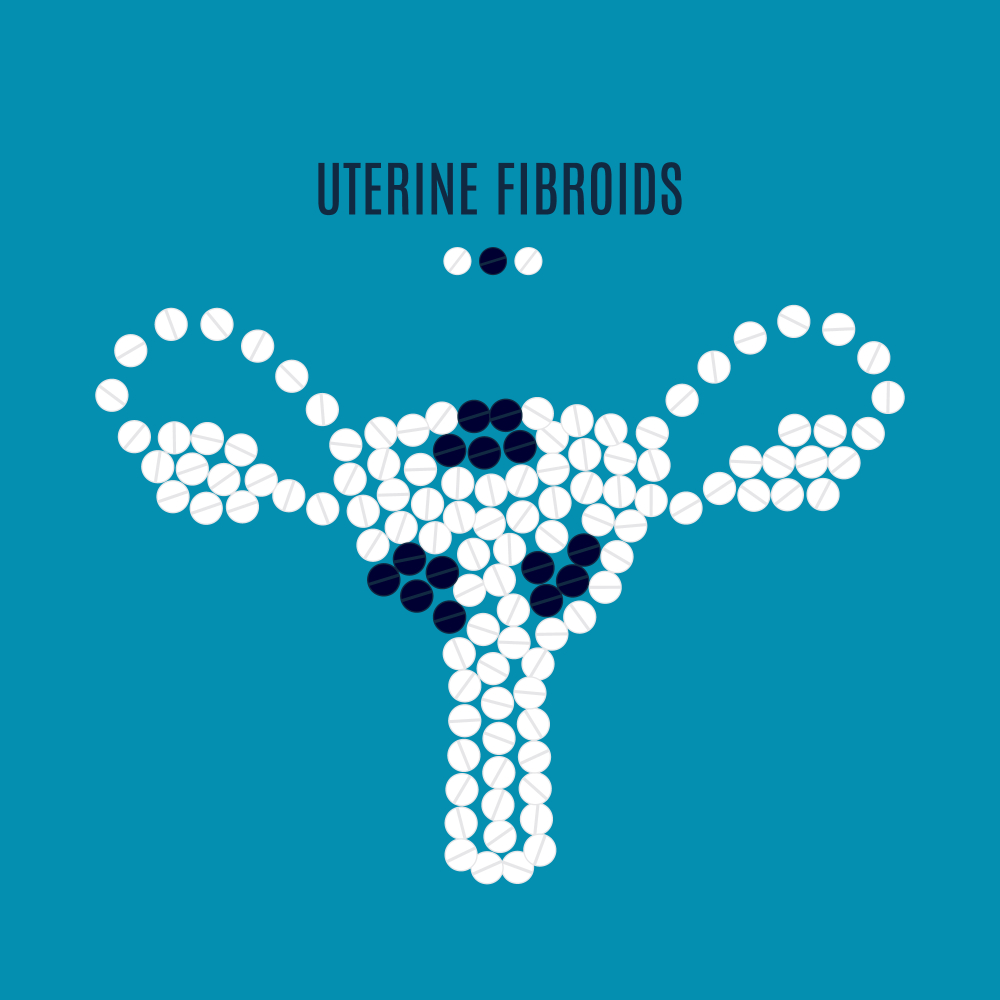What are uterine fibroids?
Uterine fibroids are firm, rubbery growths in the muscle of the uterus (womb). Uterine fibroids are almost always benign or not cancerous. They can be single growths or several may grow at different locations within the uterus. Fibroids can vary in shape, size, and location within the uterus. Sometimes, fibroids are so small they cause no problems. Other times, they grow large enough to be felt by a clinician during a pelvic exam.
Uterine fibroids are common: 70% to 80% of women develop fibroids at some point in their lives. They are most common in women of childbearing age, but they can form at any point. Women are more likely to get them as they grow older.
How does someone get fibroids?
Scientists aren’t sure why fibroids form, but most believe that the hormones estrogen and progesterone play a role in fibroid growth. It may also have to do with family history, especially if your mom or sister has had them. Black women, women who are obese, and women who started their periods very young all seem to have higher risks of developing fibroids.
What are the symptoms of fibroids?
Most of the time, fibroids don’t cause any problems. Other times, depending on the size and location of the fibroid, you may experience:
How are fibroids diagnosed?
Uterine fibroids are commonly found during routine pelvic exams. Clinicians may also use an ultrasound, or another imaging tool, to identify fibroids. It is best to get regular health screenings to catch fibroids early.
How are fibroids treated?
There are many ways to treat fibroids and more are being developed. Your age, the size and location of the fibroid, if you are trying to get pregnant or want a future pregnancy, and the problems you are having are all factors that will help determine the best treatment for you. A clinician might recommend a medical or surgical treatment to control symptoms and shrink or remove fibroids. Finally, surgery to remove the uterus and fibroids (hysterectomy) may be needed if symptoms are not controlled by other treatments.
Treatment/medications
Several medical options are available to help control problems caused by fibroids. If heavy bleeding is the main problem, hormonal birth control – like pills, patches, or shots – may decrease bleeding during periods. Some women get good relief from heavy bleeding by using a hormone-releasing intrauterine contraceptive device (IUD). There is also a pill (tranexamic acid) you can take just during your period. Special medications may also be used to shrink large fibroids before surgery.
There are also several surgical treatments available. Depending on the problems the fibroids are causing and where they are located, you might benefit from endometrial ablation, fibroid embolization, or surgical fibroid removal. Finally, surgery to remove the uterus and fibroids (hysterectomy) may be recommended.
Each treatment, whether medical or surgical, has risks and benefits that your clinician will discuss with you. Over time, you may change from one treatment to another when you no longer plan to have more children. Keep regular visits to your healthcare provider to monitor your fibroids and your treatments.
What happens if fibroids are not treated?
Untreated fibroids can continue to grow and cause more frequent and/or more severe symptoms.
If a fibroid is not causing symptoms, your clinician may work with you and decide to wait on treatment as you monitor for new symptoms or changes.
Can fibroids be prevented?
Fibroids can’t be prevented, but some studies indicate a healthy diet and active lifestyle can reduce the chances of a fibroid forming. Regular well-woman exams, which include pelvic exams if needed, can help find fibroids early, when they can be more easily treated.
Readers are invited to photocopy Patient Education pages in the journal and distribute them to their patients.
© NPWH 2020

